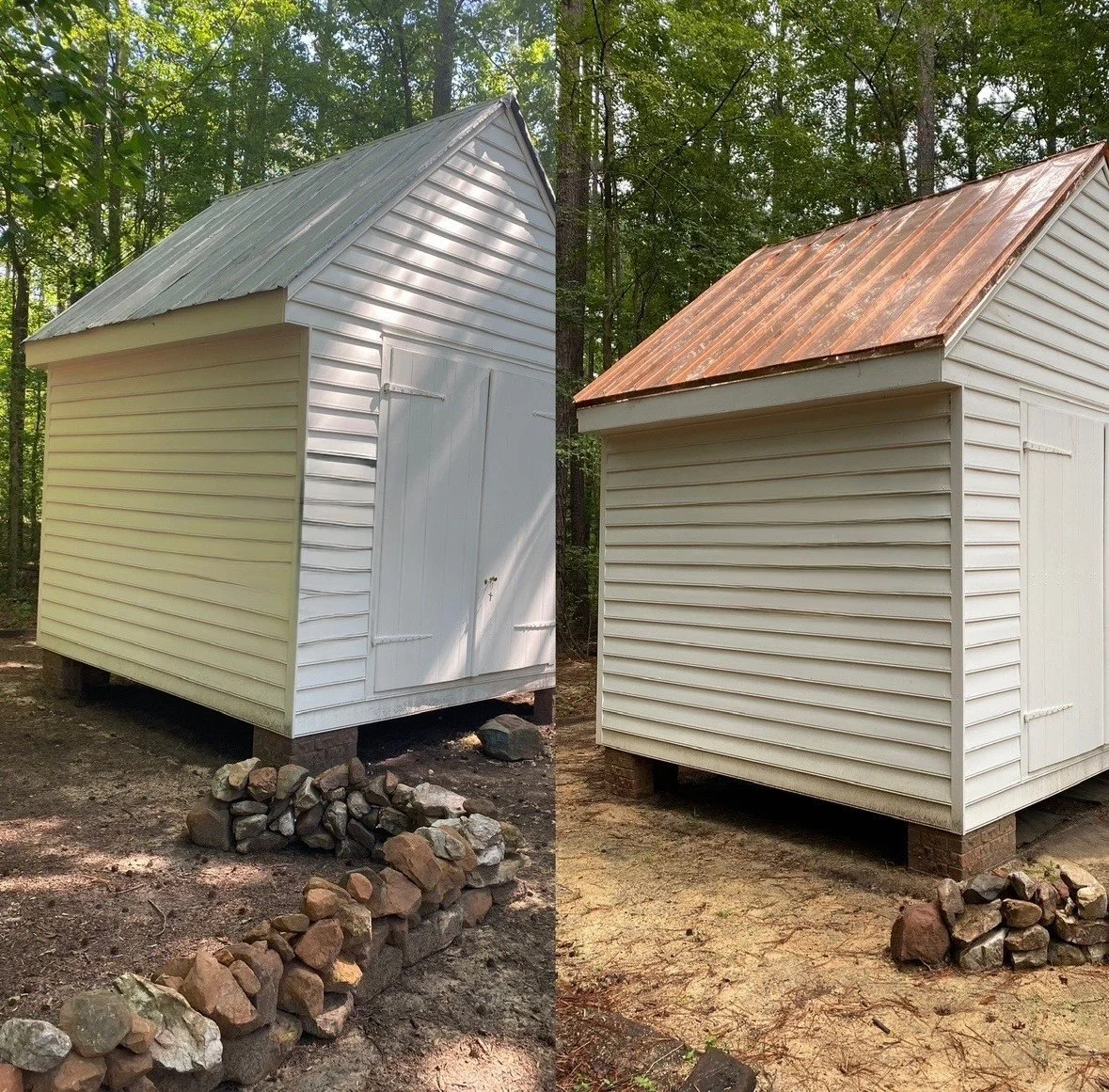Restoring History with Copper: An 1805 Smokehouse Re-roofed in NC
Copper Standing Seam Roof, Back To Its Original Roof-no project is too small
This project brought together history, craftsmanship, and preservation — all under one copper roof.
Originally built in 1805, this smokehouse was relocated from its original setting and carefully placed on private property in North Carolina to ensure its preservation. Once a vital part of everyday life in the 18th and 19th centuries, this smokehouse now stands as a beautiful historic landmark — and we were honored to give it a new roof worthy of its past.
A Roof That Honors the Past
To match the authenticity and integrity of the structure, we installed a 16 oz. standing seam copper roof, hand-folded with traditional craftsmanship. Each seam was custom-formed on site, with no exposed fasteners, echoing techniques used during the original era of construction.
Copper was a fitting choice — not only for its strength and long life, but for its aesthetic alignment with historic materials. Over time, the roof will develop a natural patina, further enhancing the building’s historic presence and blending seamlessly with the surrounding landscape.
What Is a Standing Seam Copper Roof?
A standing seam roof is made of metal panels joined together by raised vertical seams, providing excellent weather resistance, especially for smaller, historically styled buildings like this. The clean, uninterrupted lines of standing seam copper offer both performance and timeless beauty.
For this restoration, the copper panels were crafted to complement the smokehouse’s 12 ft. by 12 ft. footprint, ensuring every detail reflected the building’s period construction.
The Role of the Smokehouse in Early North Carolina
Smokehouses, also known as meat houses, were once a staple on Southern farms. In North Carolina, these small, enclosed buildings can be traced back as far as the 1700s. Before refrigeration, families relied on them to cure and store meat — especially pork — throughout the year.
During the cold month of December, which was ideal for slowing spoilage, families would butcher hogs, salt the meat, and begin the smoking process. A low, smoldering fire would be kept going inside the smokehouse for weeks. The smoke not only flavored the meat but helped preserve it, making it safe to hang and store, away from insects, vermin, and moisture.
A smokehouse was more than just a structure — it was part of the agricultural rhythm, as essential to the farmstead as planting or harvesting. Today, few of these original buildings remain, which makes the preservation of this one even more significant.
A New Chapter for a Historic Structure
By moving this smokehouse to a private residence, the owner has helped ensure that a valuable piece of early American heritage will endure. And by re-roofing it with carefully hand-folded copper, we’ve given the structure a roof that respects its age while securing its future.
This is more than a restoration — it’s a conversation between centuries, told in wood, smoke, and copper.
Thinking of a Copper Roof?
Whether you're restoring a historic structure or simply love the look and longevity of copper, we specialize in authentic, high-quality copper roofing — from smokehouses to full estates. Reach out to learn how we can bring your project to life with time-tested craftsmanship.

